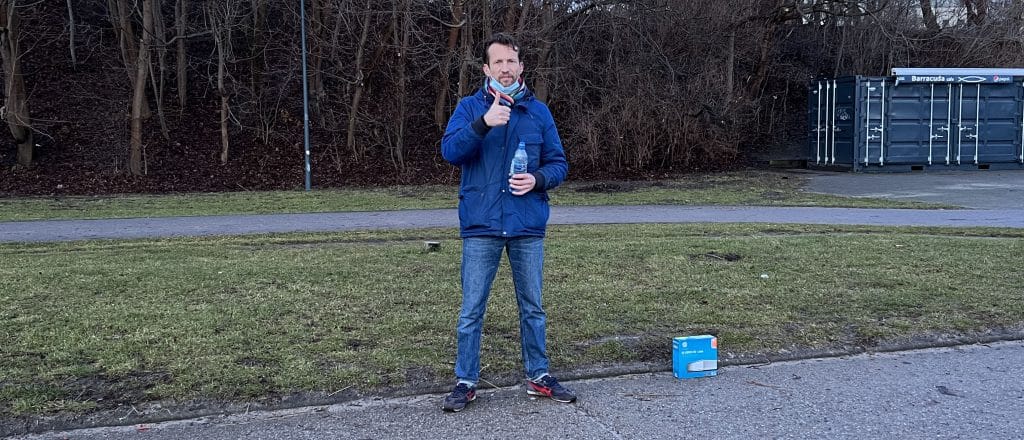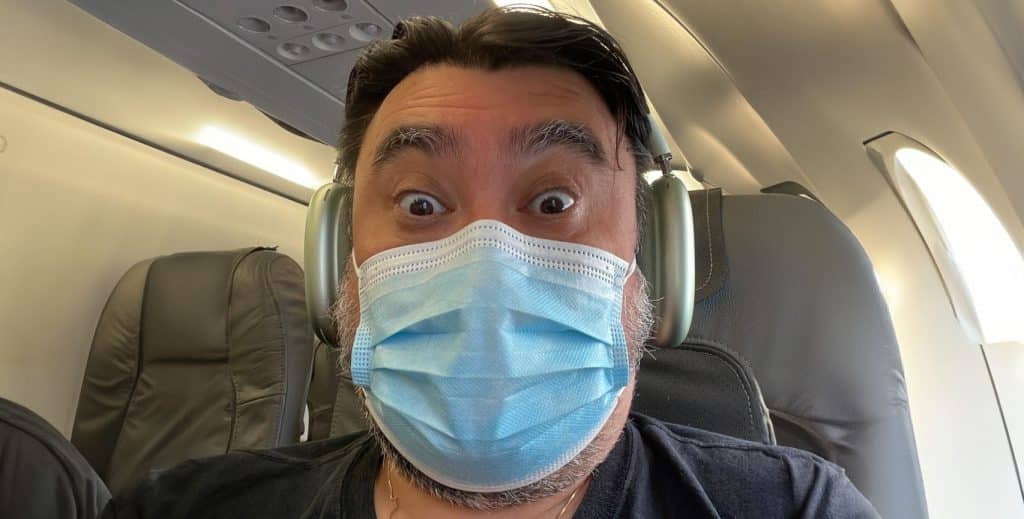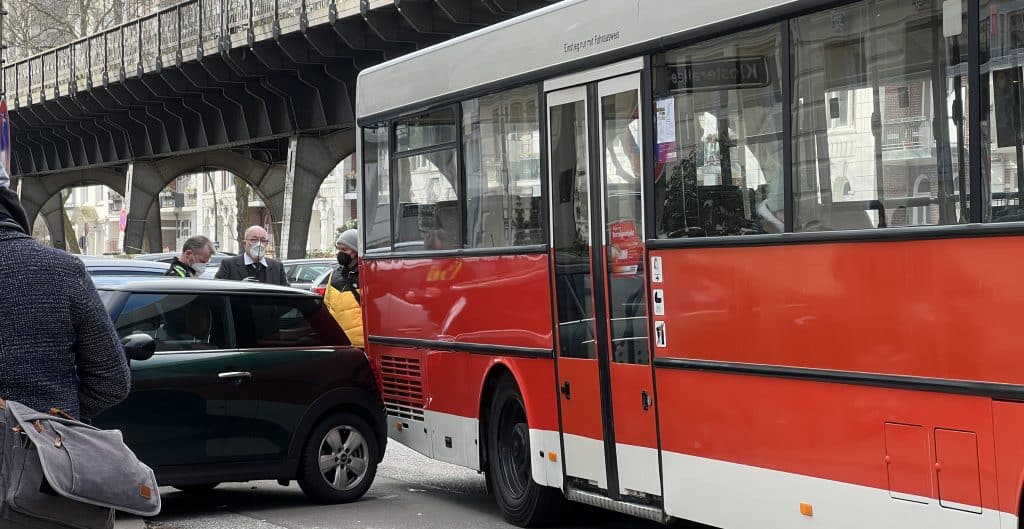WHEN F***ING SPRING IS IN THE AIR : A Film About Identity and Family Trauma
19 AugustWhen F***ing Spring is in the Air is a powerful and raw Polish feature film that tells the story of 17-year-old Kasia, a rebellious Euro-orphan who embarks on a journey to find her biological parents after the death of her grandmother, her sole guardian. Feeling abandoned all her life, Kasia finally decides to claim the money she believes her parents owe her, having left Poland years ago in search of a better life in Germany. What follows is an intense coming-of-age road trip where Kasia discovers new family members and uncovers long-buried family secrets.
The film is set in the heart of winter in Gdynia, Poland, and follows Kasia on her emotional journey through a cold and often hostile world. As she walks the snow-covered streets of her hometown, she discovers that her parents have separated and that her mother has started a new family. The biggest surprise, however, comes when she meets her younger sister Ania, who, like Kasia, has been kept in the dark by parental lies. Together, the sisters decide to visit their father in Amsterdam to demand answers and compensation. The journey that follows is both a physical and emotional one, where the confrontation with their parents forces the sisters to confront their own identities and futures.
A Story Rooted in Personal Experience
The inspiration for the film comes from the personal experiences of director Danyael Sugawara. Born to a Japanese father and a Polish mother, Danyael has always struggled with questions of identity and family ties. His complex relationship with his father, who moved to Japan after the divorce, leaving Danyael and his family in the Netherlands, served as a key driving force behind Kasia’s story. During his many visits to Poland, Danyael was confronted with the phenomenon of Euro-orphans—children left behind by parents who migrated to the West for work. These children, often raised by grandparents or in orphanages, inspired Kasia’s character and her search for answers.
The Marathon Behind the Scenes: Production Challenges
The production of When F***ing Spring is in the Air was a true test of endurance, with the creative team repeatedly facing obstacles that threatened the project’s progress. What began as a promising project in 2011, with director Danyael Sugawara developing the concept together with writer Heleen Suèr and producer Trent during the prestigious Ekran program at the Wajda School in Warsaw, quickly turned into a marathon of setbacks.

Netherlands Film Fund
In the early stages of development, the project received support in the form of development funding from the Dutch Film Fund, which provided a solid start. In a few years Danyael and Heleen manager to write a gripping and emotional script that was both supported by Creative Europe and Artistic Development at the Netherlands Film Fund. In 2016 we were ready to submit for Production Funding. However, when the team first attempted to secure financing for the film’s realization in 2016, the application was rejected because the tone and atmosphere of the project was not clear. Determined to realize their vision, the team decided to shoot several scenes in Poland with the intended lead actress to demonstrate the film’s tone and potential. These images were then used to convince the Film Fund of the film’s potential. The strategy paid off, as a year later, the application was approved, providing the project with much-needed financial support.
Casting Challenges: The Search for Kasia
The casting process for the film was one of the most challenging aspects of production. In the first phase of casting in 2017, a series of auditions were held in Warsaw, with test scenes being shot, aiming to begin filming within the next two years. During this round, the team found the perfect actress for Kasia, along with actors for her parents. However, delays in financing and the postponement of filming for several years resulted in the original lead actress aging out of the role, forcing the team to restart the casting process.
In the second phase, after securing foreign financing (more details below), the team resumed the search for the right actress for Kasia. This long and intensive process lasted nearly a year, with over 1,600 girls considered—most submitting self-tapes, and the final 30 participating in live auditions. The team sought a complex character for Kasia—someone who initially appears unsympathetic but ultimately reveals a deeper, more vulnerable side. By early 2021, nine months before filming, they had found the perfect actress. They then cast the remaining roles, including Kasia’s father, mother, and sister, with the latter being particularly crucial. By September 2021, they had assembled a wonderful main cast and were preparing to focus on supporting characters, aiming to start shooting in December.
Unfortunately, the actress cast as Kasia faced health issues, prompting the team to reluctantly consider a backup actress in case the situation worsened—and it did. Within two months, they had to recast the lead, postpone shooting to January, and simultaneously handle location scouting and the casting of supporting characters. This upheaval required the team to start over, causing significant stress and panic. However, everything worked out for the best, as Ada, the eventual choice, truly understood Kasia’s character, making her the perfect choice for the role. In the end, it all turned out for the better.
The Struggle for Funding: PISF’s Rejections
One of the most frustrating setbacks came from the Polish Film Institute (PISF). Initially, it seemed that the film would receive the much-needed support; the committee was enthusiastic about the script and even requested a few minor adjustments to approve the financing. The future looked promising, and the team worked hard to make the necessary changes.
But when the project was resubmitted six months later, the situation had drastically changed. The political climate in Poland had shifted, and a new committee, appointed after the elections, had taken over. The new committee members, who held strong patriotic convictions, rejected the project on the grounds that the film’s theme—Euro-orphans and the issue of abandoned children—”did not exist” in Poland. They harshly criticized the script and preferred to allocate funds to films with a patriotic focus. Despite objections and attempts to appeal the decision, the rejection stood. The new management was adamant about not funding a film that, according to them, addressed a problem that didn’t exist, despite the presence of hundreds of thousands of Euro-orphans in the country.
The Difficult Path in Germany and Belgium
After the rejection from PISF, the team was forced to seek funding elsewhere, particularly in Germany and Belgium. In Germany, securing funds proved to be a lengthy process. Multiple attempts were needed before a breakthrough finally occurred. Each time there seemed to be hope, but bureaucratic obstacles and competition for limited resources made it a tough battle.
Belgium eventually played a crucial role in saving the film, but even here, nothing came easily. During the co-production market in Brussels, a collaboration with Belgian partners was established, providing hope for the film’s progress. Unfortunately, this did not lead to immediate funding, but ultimately, the production was saved by a Belgian tax shelter. This was a huge relief, as the team finally had the means to continue with production.
And another positive note in the meantime, was that Poland introduced a Tax Incentive, 30% of the Polish spend. It was not our initial support we counted on in Poland, but at least it was around 100K.

Covid-19 and the Challenges on Set
As if the financial setbacks were not enough, the production of the film was further complicated by the outbreak of Covid-19. The pandemic brought unprecedented challenges, particularly during the filming. The original shooting schedule was completely disrupted when both the lead actress, who played Kasia, and the cinematographer tested positive for the virus. This led to significant delays and forced the team to compress the entire schedule, leaving little room for breaks and increasing the pressure on the team. Initially we had planned to start January the 11th until the end of March, and shoot in 36 days in three countries, with a week of rest and preparation in foren tof each shooting period. This turned out to be shooting in 33 days from the 6th of February until the 6th of April and almost no rest between the shooting periods.
The stress on set was immense. Directing during this period was an experience where the team constantly had to improvise and make decisions under extreme pressure. Despite the appearance of calm and control on the outside, there was often a storm of worry and uncertainty raging inside. In addition to the health risks, the team also had to deal with logistical challenges, such as rescheduling rehearsals and adjusting locations to fit the new circumstances. Filming in three different countries—Poland, Germany, and the Netherlands—only added to these complexities.
Loss of Funding and Other Accidents
To make matters worse, the team received news during filming that the Polish financing had also fallen through due to issues with the Tax Incentive, creating a €100,000 hole in the budget. This financial setback forced the team to be even more creative with the resources they had at their disposal.
As if that weren’t enough, while the team was filming a crucial scene in Germany, one of their production vehicles—a bus—was involved in a serious accident. The impact was significant: not only did the scenes involving the bus have to be completely rewritten, but the schedule and logistics of the shoot were also turned upside down. Danyael and his team faced the challenging task of adjusting the storyline and finding an alternative way to film the scene without losing the essence of the film.

A Monument to Perseverance
Despite all these setbacks, the team succeeded in completing “When F***ing Spring is in the Air”. It has become not only a film but also a symbol of determination, perseverance, and the power of creativity. The many obstacles that had to be overcome contributed to the depth and authenticity of the final product.